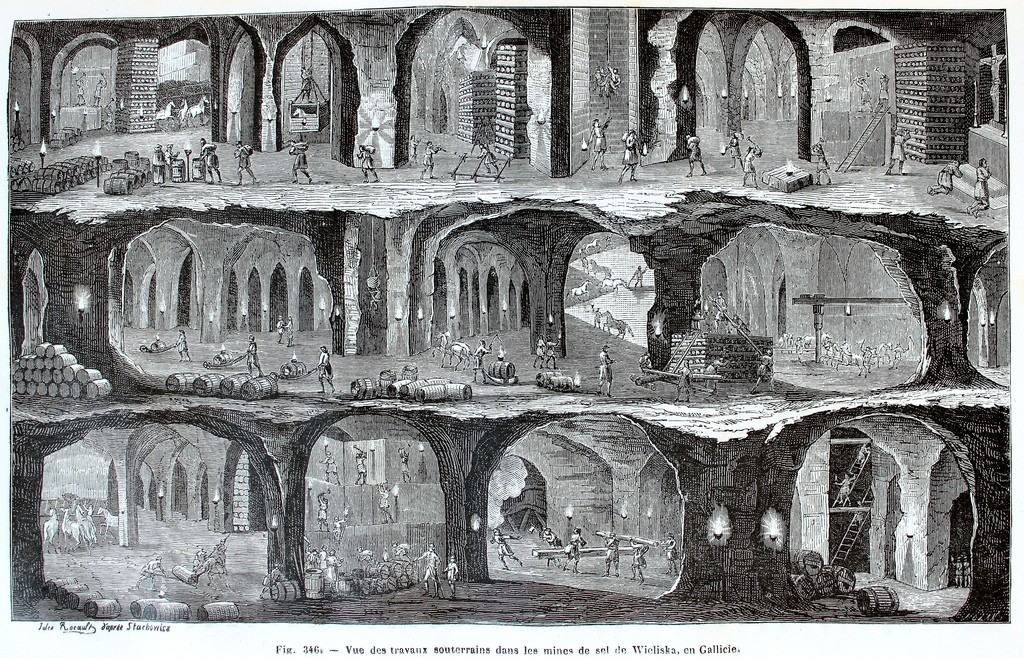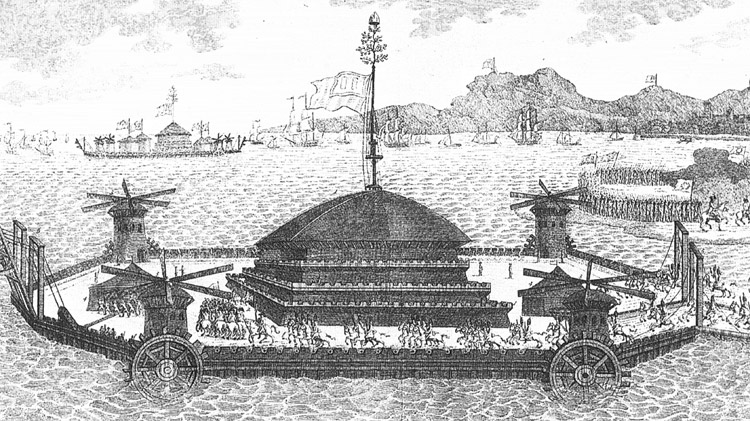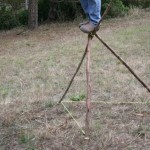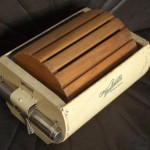“Les merveilles de l’industrie, ou description des principales industries modernes”, Louis Figuier (1873-1877). The 4-volume book is in French, but the engravings are indeed wonderful: Part 1 (750 pages), Part 2 (736 pages), Part 3 (687 pages) & Part 4 (744 pages). A sample of the illustrations of part one and four can be found here and here. Below: salt mines in Wieliska, Poland (extra large illustration). Related: Three thousand pages of 19th century technology.
The Wonders of Industry (1873-1877)
Grinding the Wind: the Treadwheel Fan
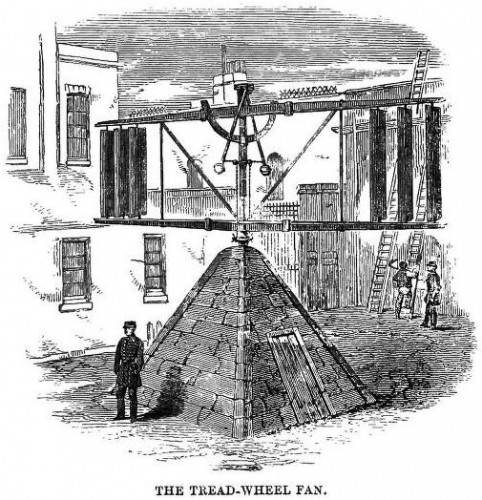 I wrote about prison treadmills before. They were invented in England in 1817 by Sir William Cubit, who observed prisoners lying around in idleness and put himself to the task of “reforming offenders by teaching them habits of industry”.
I wrote about prison treadmills before. They were invented in England in 1817 by Sir William Cubit, who observed prisoners lying around in idleness and put himself to the task of “reforming offenders by teaching them habits of industry”.
Forty-four prisons in England adopted it as a form of hard labour that could also grind grain or pump water.
However, as it turns out, in at least one jail prisoners were only “grinding the wind”: they were walking a treadwheel that was connected to a giant fan built on the courtyard. By this apparatus the resistance necessary for rendering the tread-wheel hard labour was obtained.
The system is explained in “The criminal prisons of London and scenes of Prison Life” (1862), written by Henry Mayhew & John Binny. Starting on page 299, they describe the method of “hard labour”, and the technologies used for it: the treadwheel, crank labour & the shot drill. Great reading.
Harnessing the Sun: the History of Solar Energy
The Archdruid Report discusses some early applications of solar energy by Augustin Mouchot (late 1800s) and Frank Schuman (early 1900s). An overview of historical experiments and applications of solar energy can be found here and here.
Three Thousand Pages of 19th Century Technology
The “Dictionary of arts, manufactures, and mines containing a clear exposition of their principles and practice” by Andrew Ure (and many others) is a 3,000 page illustrated encyclopedia packed with useful technical and statistical
information relating to industrial development in the nineteenth
century.
The paper version can be yours for a mere € 1,248 (or $ 1,760, including a discount), but the Internet Archive has made the entire seventh edition (published in 1875) available for free: Volume 1 (A-C), Volume 2 (D-I), Volume 3 (J-Z). Some volumes of earlier editions can be found at Google Books.
Illustration on the left: the manufacturing of money (see “Mint”).
Related: The wonders of industry (1873-1877).
Floating Citadels, Powered by Wind and Water Mills
This engraving, published in 1798, shows the gigantic St. Malo raft, designed in 1791 during the French Revolution. The engraving informs us that this extraordinary structure was 600 feet long by 300 broad, mounts 500 pieces of cannon, 36 and 48-pounders, and is to convey 15,000 troops for the invasion of England. In the midst is a bomb-proof, metal-sheathed citadel.
The Panorama of Professions and Trades (1837)
What do you want to be when you grow up? In the 19th century, this question was easier to answer than it is today. There were 87 possibilities, according to Edward Hazen, author of “The Panorama of Professions and Trades” (1837). The book was also published as “Popular Technology; Professions and Trades” in 1870, Part 1 and Part 2 – these are better scans. Every profession is explained and illustrated. Find the table of contents below. Via Doug Berch, musician and dulcimer maker.
